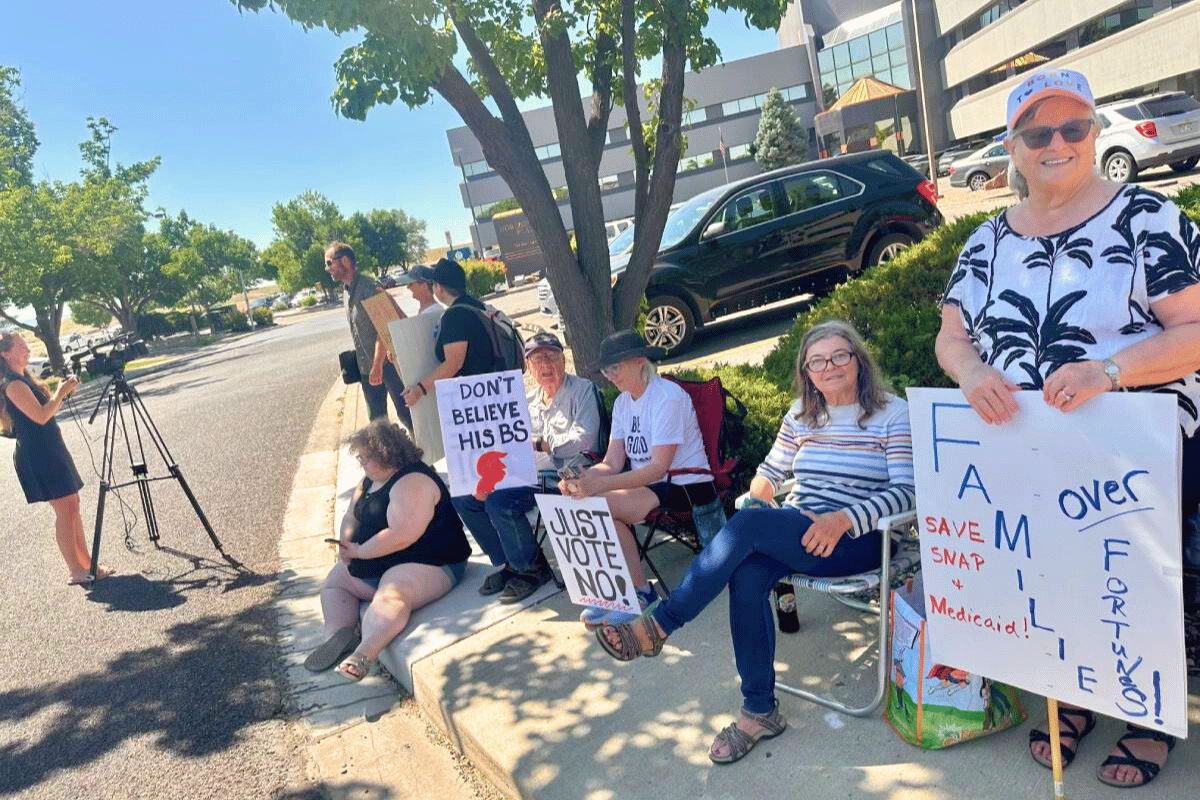If all goes as planned Yosemite Valley — the National Park's most popular tourist area — will re-open Tuesday after being closed for nearly three weeks due to poor air quality and fire danger. At the moment, there are no people on trails, or climbers on cliffs that line the valley.
This weekend firefighters hope is to keep the fire out of Yosemite Valley, containing the blaze about three miles away.
"Yosemite Valley is absolutely gorgeous, and we would prefer it to be green and not black," says Forest Service Planning Officer Johnny Clem.
The Ferguson fire began almost a month ago in an area that hadn't burned in decades. Officials said earlier this spring that, if a fire was ignited there, they expected a big blaze.
Earlier this year, before the fire, Leroy Westerling brought me to a patch of dead pine trees near Lower Yosemite Fall — one of the parks busiest selfie spots. Dead pine trees are all around us.
"We're looking at some pretty dense, brushy sort of oak coming up here with cedars and some dead pine trees," Westerling says.
Westerling is a professor at the University of California, Merced, studying the connection between climate change and fire in the Sierra Nevada. He's focusing 500 years into the future, asking questions like: Will Yosemite be colder, warmer, or a lot hotter?
Some of his predictions suggest little to no change. But the most extreme predictions depict a Yosemite some people might not like.
"In the valley, where we are today, I think this is going to be more oak woodland kind of landscape," Westerling says. "It'll still be a beautiful place to visit, but it won't look like this." It would be a dramatic change for a place idolized as a lush pine forest. The rich, green views of Yosemite Valley would be replaced, eventually, with dry grass, shrubs and oaks.
The Ferguson Fire swept through an area ripe for fire, with overgrown brush and pine trees killed off by California's drought. To deal with all this die-off, Yosemite National Park's Fire Chief Kelly Martin says park and forest managers need to change the way they think about fire.
"We need to be an advocate for good fires on the landscape to prevent these big fires in the future," says Martin, the park's first female fire chief.
Martin is talking about lighting fires on purpose during cooler months. That's called a prescribed burn. This idea might sound odd in the middle of fire season, but Martin says this tool could greatly reduce how big fires grow.
"I love how watching fire is a renewal agent, it's not just a destructive agent," adds Martin.
Martin thinks of Yosemite like a patchwork quilt with only some finished pieces. Those are the areas that have already burned. The missing patches are the places with the highest fire risk. She wants to connect those by burning them in a controlled way. It's a practice that she says needs better funding.
"We're just storm chasers to these great big wildfires, which [cost] almost $3 billion a year and the prescribed fire program might only get a tenth of that money nationwide," Martin says.
Even though this idea scares some people who live in forested areas, Martin says, if they really want the valley to remain mostly green and lush they're going to get comfortable with the idea.
UC Merced's Leroy Westerling says changes to forests in Yosemite are accelerating. He predicts that, with the loss of forests that absorb carbon, the area could emit more carbon than it stores sometime in the next century.
"You've got this dynamic process of putting carbon into it and its taking carbon out of it and which of those processes dominates depends on the overall climate," says Westerling.
And if the climate continues to warm, that could equal more fires. Westerling agrees that forest officials need to manage fire with fire so future generations can enjoy a Yosemite similar to the one that exists today.
Ezra David Romero is the host of Capital Public Radio's podcast Yosemiteland .
9(MDEyMDcxNjYwMDEzNzc2MTQzNDNiY2I3ZA004))








